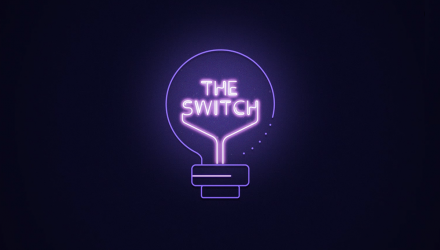This season of “The Switch” is focused on making the case for disruptive innovation. In this episode, hosts Cathie Wood, CEO for ARK Invest, and ETF Trends’ CEO Tom Lydon and CIO Dave Nadig discuss deflation.
Lydon opens by discussing how the number one concern for financial advisors within markets is inflation, but Wood counters that the greater long-term risk in ARK’s eyes is actually deflation for three specific reasons.
Nature Deflationary
The first reason she discusses is that technological innovation is by nature deflationary. Wood gives several examples of this, one being that for every cumulative doubling that occurs of battery pack systems produced for electric vehicles, costs drop 28%.
Nadig jumps in, pointing out that the concern of inflation revolves around increasing costs of raw materials, rising costs of labor due to shortages, and the increasing money circulating in the global economy. He argues that these more traditional pressures do play a part in driving up inflation.
“No doubt we’re going through an inflation surge right now,” Wood says, going on to explain that it is inflation derived from the base effect of the pandemic price crashes as well as supply chain issues and shortages.
Wood addresses the concerns around inflation relating to raw material costs and says that supply is starting to level out to demand, with prices like lumber that had peaked in May now at half their recent highs. This pattern is beginning to be seen in several areas, with materials like copper beginning to have price reductions, and while it may not be a consistent downward movement, Wood believes that prices should continue trending in that direction.
The labor shortage that was “turbocharged” from the pandemic is causing companies to raise their pay, and Wood explains that this is the genesis cost-push inflation. “If we are right on robotics, it’s not going to happen,” Wood says. Rising minimum wage cost is forcing companies to consider robotics where they might not have otherwise. Wood estimates that the average price of a collaborative robot is currently $15,000 and appeals to a wide range of companies.
Creative Destruction
When looking at money growth as inflation, Wood explains, “the key variable there is velocity. Velocity has been falling; before the ’08–’09 crisis it started falling, and it accelerated to the downside after the ’08–’09 crisis.” This means that money is exchanging hands less frequently as people hold onto their money longer, particularly if they believe that prices are going to be falling at some point down the line.
Circling back to the three deflationary sources that ARK sees now, creative destruction is the second major place that deflationary pressures occur. This happens particularly when companies cater to short-term demand for dividends by buying back shares instead of allocating money to innovation. This, in turn, means that they make themselves obsolete in the long-term, and to pay their debts, they are forced to cut prices, causing what Wood terms “bad deflation.”
Cyclical Deflation
The third type of deflation that Wood describes is cyclical deflation. “The reason I think this is going to happen to a greater extent than most is because if you look at consumer spending during the coronavirus, we went from — normally consumers spend about a third of total consumer purchases on goods, nondurables, and durables — that number went well north of 40%.” The giant demand for consumer goods had caused companies to increase their inventories or else risk losing business, but as prices begin to come back down, they are having to divest themselves of their excess inventory and cancel orders. As pandemic fears and pressures start to potentially ease, consumers will move from goods to services, causing huge inventory buildups.
Lydon moves on to ask Wood how blockchain fits into the deflationary picture, and she explains that it’s “more of a Moore’s law phenomenon.” Blockchain technology and decentralized finance remove the need for what Wood describes as a middleman, thereby driving down costs significantly.
“The costs in the financial services industry we think are coming down very quickly for those who are embracing these new technologies, and those who do not embrace them will be in harm’s way, we think, ultimately,” Wood says.
As the different innovations at play in the markets all interact and converge with each other, they are set to create “explosive demand” with prices continuing to be driven down looking forward, explains Wood. An example of this is autonomous taxi networks, which bring together three of ARK’s major innovation platforms: autonomous vehicles and robotics, energy storage, and artificial intelligence.
“Think about the convergence of those three: we think it’s going to create, our newest estimates on this are a $12 trillion opportunity within the next 10 to 15 years,” Wood says.
For more episodes, check out The Switch video playlist.
For more news, information, and strategy, visit the Disruptive Technology Channel.

